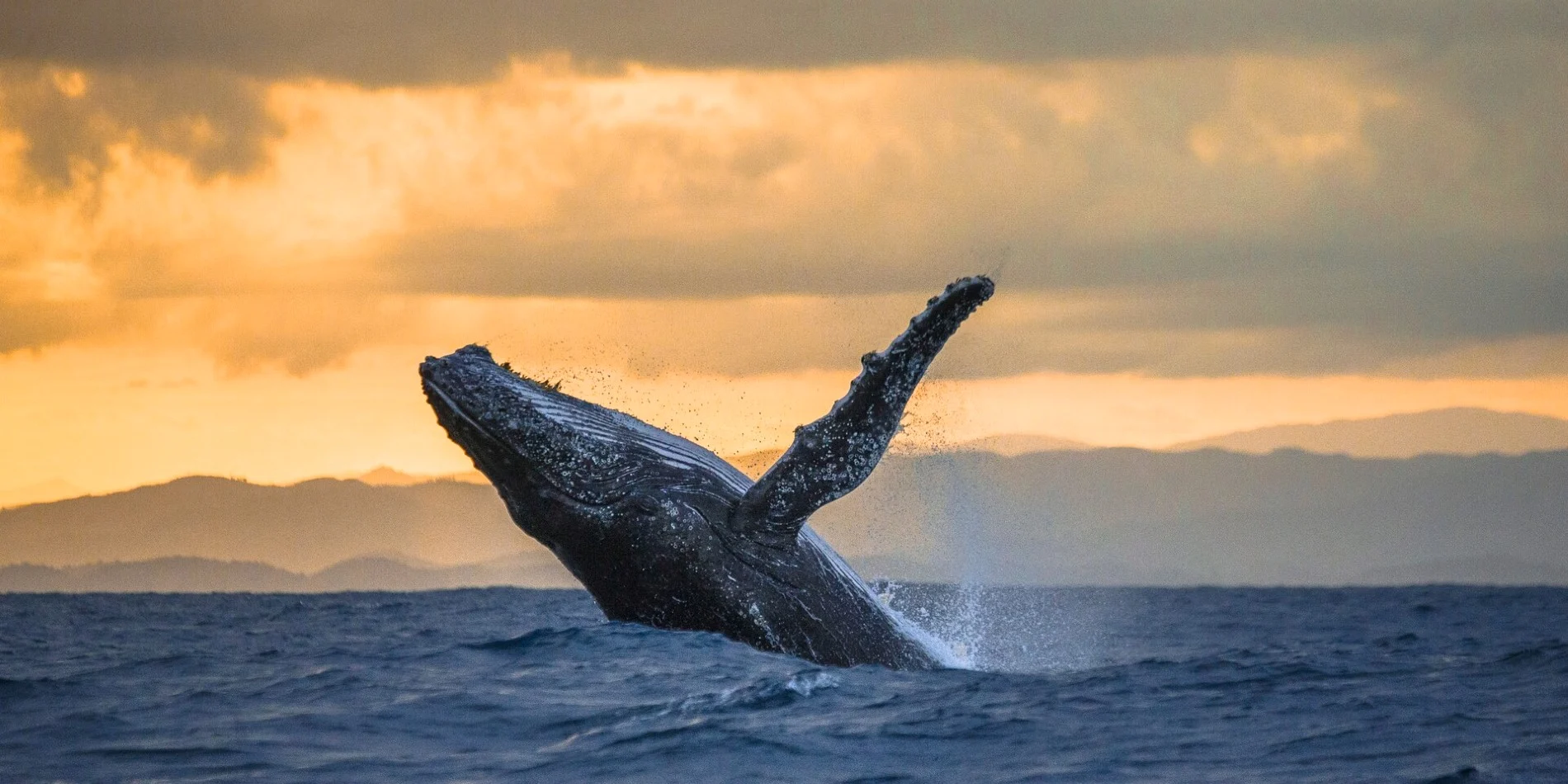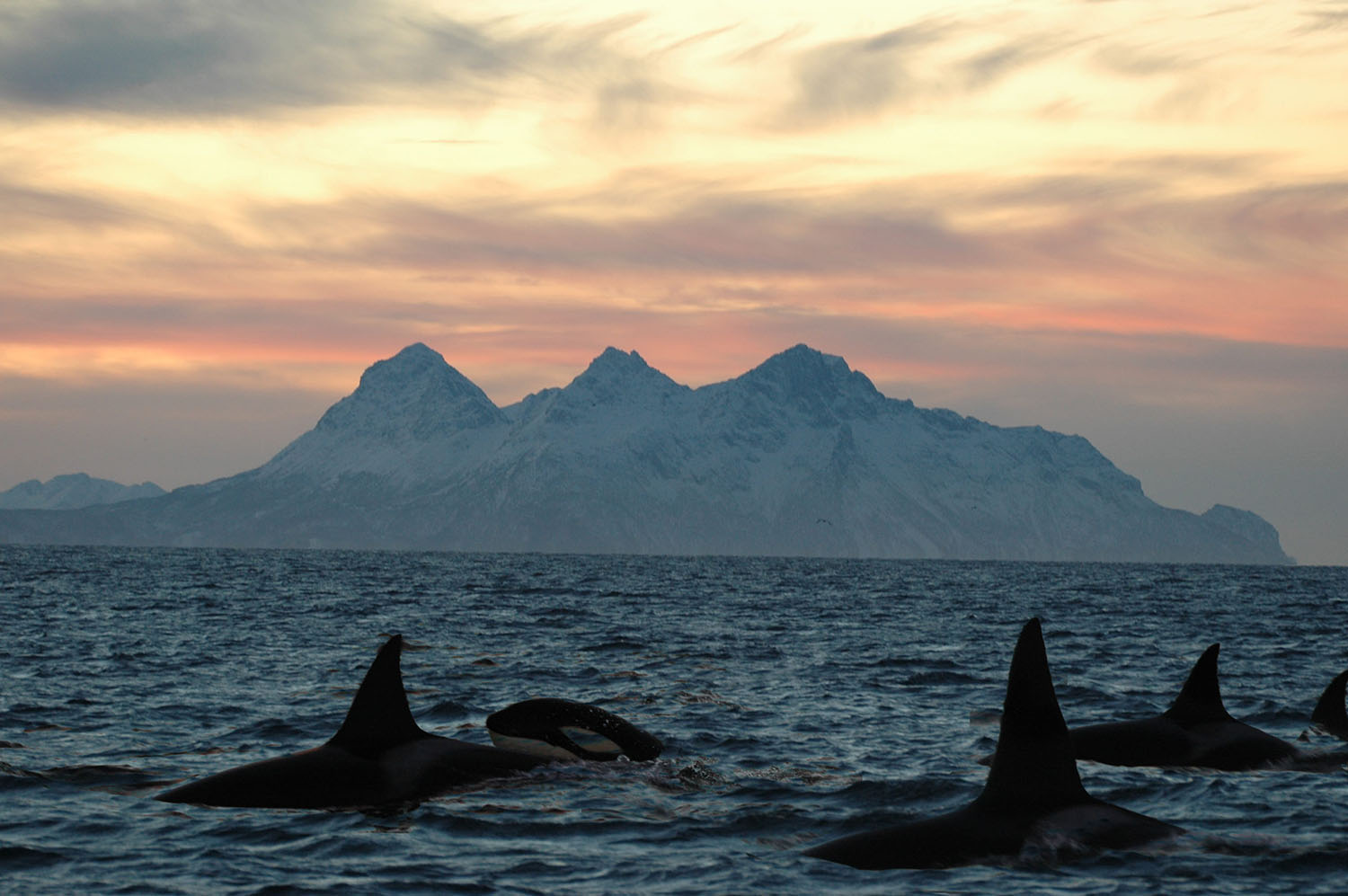Tromsø, a vibrant city located in the heart of Norway’s Arctic, has emerged as a prime starting point for whale watching enthusiasts. With its picturesque fjords and proximity to the open sea, it provides a serene backdrop to the thriving marine life that flocks to its nutrient-rich waters. The objective of this article is to furnish readers with essential information to plan a memorable whale watching tour in Tromsø.
The allure of Tromsø whale watching is multifaceted. It is not merely about sighting these magnificent marine giants but witnessing them in their natural habitat. The Arctic waters provide a haven for a variety of whale species, offering a unique window into their aquatic world. The experience is further enhanced by the backdrop of stunning fjords and the possibility of the Northern Lights illuminating the sky, creating a surreal tableau that stays etched in memory long after visitors return home.
Planning a whale-watching tour requires a blend of the right timing, choosing a responsible tour operator, and preparing for the adventure. This guide aims to navigate you through these aspects, ensuring a rewarding and ethical whale watching experience with Tromsø as the base. Whether it’s understanding the best season to see the whales, learning about the different species you are likely to encounter, or ensuring that your adventure sticks to ethical whale watching practices, this article endeavors to cover these bases.
Embarking on a whale watching tour in Tromsø is more than just an outing; it’s an opportunity to immerse in a remarkable marine wonder while appreciating the natural beauty and ecological importance of the Arctic region. Through the lens of Tromsø whale watching, this guide aspires to enrich your Arctic adventure, making it not only enjoyable but also educative and ethically responsible.
Visiting Tromsø? Don’t miss our comprehensive guide to aurora viewing in Tromsø and beyond
Table of Contents
Tromsø Whale Season: When to Go and What to Expect

The prime season for whale watching in Tromsø typically spans from November to late January. This period sees an influx of whales into the fjords due to the migration of herring, their primary food source. The winter months offer the best window to witness the awe-inspiring spectacle of these marine giants amidst the stunning backdrop of snow-capped fjords.
The climate in Tromsø and the surrounding fjords during the whale watching season can be harsh, with temperatures often plummeting well below freezing. The daylight hours are limited, with the sun not making an appearance in the heart of winter, a phenomenon famously known as the Polar Night. However, the lack of sunlight is compensated by the chance to see the Northern Lights dance across the sky, adding a surreal touch to the whale watching experience.
Whale watchers can expect to see a variety of species during their excursion. The most commonly sighted whales include the Orca, or Killer Whale, and the Humpback Whale. Orcas are easily recognizable by their distinctive black and white coloring and can often be seen hunting in packs, displaying sophisticated and coordinated hunting behaviors. Humpback Whales, on the other hand, are known for their enormous size and majestic whale songs, which can be heard during their courtship. The sight of Humpback Whales breaching the icy waters is a sight to behold, making for stunning photographs and memories.
Other species that occasionally make an appearance include porpoises and Fin whales. Each species comes with its unique behaviours and characteristics, providing a diverse spectacle for those on board the whale watching tours.
The conditions at sea can be rough, and it’s advisable to prepare for cold and potentially wet weather. Dressing in layers, with waterproof outer layers, is recommended to stay warm and dry during the tour.
In summary, whale watching in Tromsø is a rewarding experience, with the winter months providing the most opportune time to witness a diverse array of whale species in action. The climate during this time can be challenging, but with adequate preparation, the adventure is well worth the effort.
Different Whale Species You Can Encounter

The Tromsø whale watching adventure can be compared to an unfolding narrative, where each species of whale you encounter adds a unique chapter to the story. The Arctic waters serve as a temporary residence to a fascinating variety of whales, each bearing distinctive traits and behaviours.
The most iconic among them are the Orcas or Killer Whales. They are easily identifiable by their black bodies, white undersides, and a white patch near the eye. Orcas exhibit a high level of social organization and are often seen in large pods, engaging in coordinated hunting strategies to encircle and capture their prey, primarily herring. Their acrobatic displays, punctuated by high-speed chases and leaps above the water, present a dramatic show of natural prowess.
Complementing the orca spectacle are the Humpback Whales, known for their remarkable acrobatics and haunting songs. Their massive pectoral fins and distinctive hump-backed appearance make them easily distinguishable. Humpbacks are often seen breaching the water surface, slapping their fins, and diving with their tails flipping above the water, a sight that evokes awe and admiration.
Less common but equally captivating are the sightings of Fin Whales. Characterized by their enormous size, sleek bodies, and unique asymmetrical colouration on the head, Fin Whales are a majestic sight. They are rare compared to Orcas and Humpbacks. The whales are part of the baleen whale group and are the second largest animal on Earth, they can reach up to 25 meters in length.
Every species you encounter during your Tromsø whale watching tour unveils a different aspect of the marine ecosystem, showcasing a harmonious yet fiercely competitive world beneath the icy Arctic waves. The diverse behavioural displays, from the coordinated hunts of Orcas to the playful antics of Humpbacks, reflect a complex yet beautifully orchestrated marine realm, making Tromsø whale watching a voyage of discovery and profound admiration for the wonders of the natural world.
Ethical Whale Watching Practices
Embarking on a Tromsø whale watching tour is not merely about the spectacle, but also about respecting the natural habitats of these magnificent marine mammals. Ethical whale watching is imperative to ensure the sustainability of this activity and to contribute positively to the conservation of marine ecosystems.
Tromsø, being a responsible and eco-conscious destination, adheres to strict regulations and best practices when it comes to whale watching. The guidelines are designed to minimize the disturbance to whales while providing an enriching experience for visitors. One of the principal rules is maintaining a safe and respectful distance from the whales. This ensures the whales are not stressed or disturbed in their natural environment, allowing them to continue with their natural behaviours uninhibited.
Local tour operators are well-versed in these guidelines and are committed to adhering to responsible practices. They are often part of broader conservation efforts, contributing to research and awareness campaigns about marine conservation. By choosing a responsible tour operator, you are not only guaranteed a respectful whale watching experience but also contributing to the broader cause of marine conservation.
Furthermore, the ethical practices extend to educating visitors. Tour guides provide insightful information about the whales, their behaviours, and the challenges they face such as climate change and marine pollution. This educational aspect of the tour aims to foster a deeper understanding and appreciation of the marine environment among visitors.
Adhering to ethical whale watching practices is a collective effort that goes a long way in ensuring that the marvel of witnessing whales in their natural habitat can be a joy experienced by generations to come. Through responsible tourism, we can all play a part in conserving the magical allure that the Arctic waters hold.
Choosing a Whale Watching Tour

Selecting the right whale watching tour operator is crucial to ensure a memorable and responsible experience. Several factors come into play when making this decision. Here are some key considerations:
- Group Size
Smaller group sizes often provide a more intimate and less disruptive whale watching experience. It allows for better viewing opportunities and personalized attention from the guide. - Length of Tour
Tours vary in length, ranging from half-day excursions to full-day adventures. The longer tours may provide more opportunities to spot whales and other wildlife, and to learn about the marine ecosystem. - Ethical Practices
As discussed in the previous section, adhering to ethical whale watching practices is crucial. Look for tour operators who follow local regulations and guidelines to ensure a respectful and environmentally conscious experience. - Cost
The cost of whale watching tours can vary significantly based on the length of the tour, the vessel type, and the operator. While it might be tempting to opt for a cheaper tour, it’s important to consider the value and ethics behind the price. - Reputation
Reputable tour operators will have knowledgeable guides, adhere to ethical practices, and have positive reviews from past participants. - Additional Offerings
Some Tromsø whale watching tours may offer additional experiences such as sea bird watching, fishing, or lectures on marine biology which can enhance the overall experience.
In Tromsø, several reputable operators offer whale watching tours. Arctic Whale Tours are known for their commitment to ethical whale watching practices and experienced guides. Arctic Explorer and Best Arctic also offer a range of whale watching tours.
Moreover, it’s advisable to contact the tour operators directly to get a better understanding of what each tour entails and to find one that aligns with your preferences and values. By considering the above factors and doing a bit of research, you can select a whale watching tour that not only fulfills your desire to witness these majestic creatures but also respects their natural habitat and contributes to the conservation efforts in the Arctic region.
What to Pack for a Tromsø Whale Watching Tour

Preparation is key to enjoying your Tromsø whale watching adventure. Given the chilly Arctic conditions, packing the right items is crucial. Here’s a checklist of essentials:
- Mid Layer
Fleece or down jackets and pants will provide the necessary insulation to keep you warm. - Outer Layer
Waterproof and windproof jackets and trousers are crucial to protect you from harsh Arctic elements. Tours will often provide a thermo suit for whale-watchers. - Footwear
Waterproof boots with a non-slip sole are ideal for keeping your feet dry and providing stability on the boat. Pack extra wool socks for warmth and comfort. - Head and Hand Gear
Insulated gloves or mittens are a must. A warm hat that covers your ears is also essential. - Hydration and Nutrition
A reusable water bottle and easy-to-eat snacks like energy bars, nuts, and dried fruits will keep you hydrated and energized. A thermos flask filled with hot coffee, tea, or cocoa can be comforting in the cold weather. - Motion Sickness Prevention
Motion sickness medication or bands, particularly if you’re prone to seasickness. - Optics
Binoculars for a closer view of the whales and other wildlife, and a camera with a good zoom lens to capture the experience. Don’t forget extra batteries or a portable charger, as the cold can drain battery life quickly. - Protective Gear for Electronics
Waterproof cases or bags for your phone, camera, and other electronic devices to protect them from water and moisture. - Backpack
A bag to carry your belongings, with enough space for any extra clothing or gear you might need to shed or don during the tour. - Ear Plugs
If you’re sensitive to noise, ear plugs may provide some relief from the engine noise on the boat.
Conclusion
This guide aims to provide a thorough understanding of what Tromsø whale watching entails, from knowing when to visit, choosing the right tour, and preparing for the journey. It’s a unique adventure that brings you face-to-face with some of the ocean’s most majestic creatures in a breathtaking Arctic setting.
Embarking on a whale-watching tour in Tromsø is not just about the spectacle of seeing whales, but also about appreciating the natural world and our place within it. Your experiences in these icy waters are sure to be memorable, and sharing these stories contributes to a greater appreciation and conservation effort towards our world’s marine life and ecosystems.

